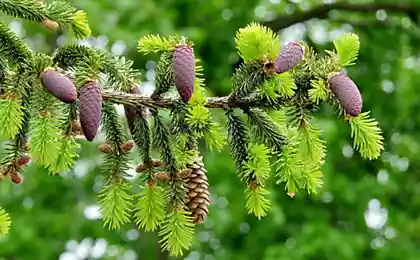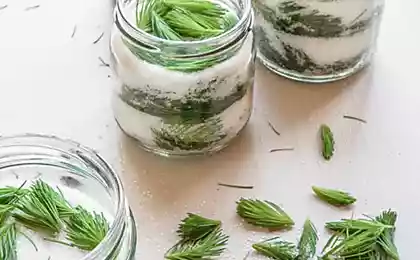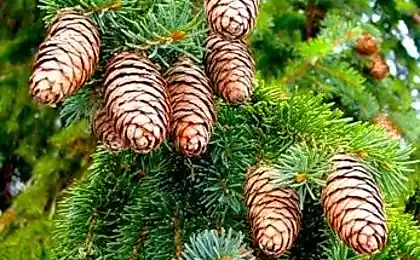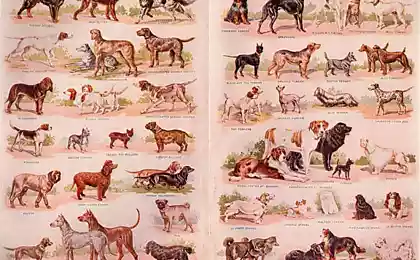673
A forgotten skill: how to make wool out of pine needles
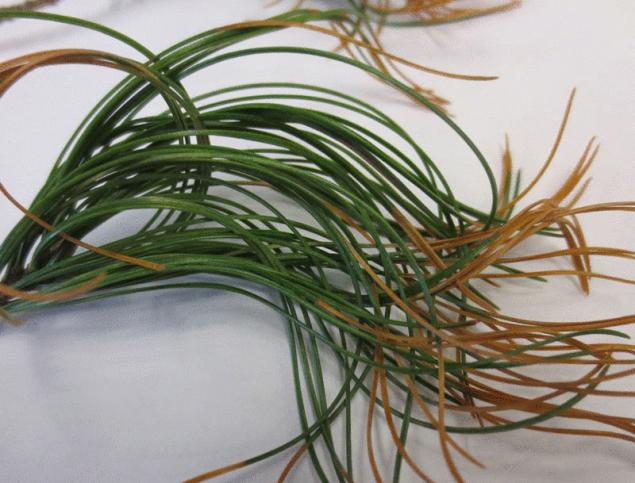
Do not be embarrassed if you never heard of pine wool. About it for a long time already nobody has heard of, obtaining a forest of wool – the forgotten skill.
The encyclopedia of Brockhaus and Efron – and that few things to remember:
"Forest wool or pine wool is made of fibers, which consists in the needles of pine trees. The use of (limited) L. wool finds for the manufacture of fabrics, the wearing of which is supposedly supposed to have medicinal value".
Medicinal value this coat is quite understandable: its effect is similar to the warming ointments used to improve circulation in the affected area.
How to make wool from the needles?
You need to know how to do is thread from plants. The thread can be obtained not only from flax or hemp – it does not fit worse, for example, nettle, or fireweed. The long stems determine the length of future fibres twisting together and which receive the thread.
In a nutshell the process is as follows: the dried stems obtinut in the Myalitsa – special device, like crushing the stems centimeter by centimeter to make a soft. Then comes the beating and omegamania – in these stages are removed solid residues of the stem. Carding is the final phase of preparation of the material to yarn. The result is a smooth, fluffy strands of fiber without foreign inclusions.

Job Svetlana Panenko, Belarus. Material – nettle.
With the needles a bit more complicated. To get fiber from pine needles, to break through their solid cellulose. Unfortunately, were not kept reliable data about the methods used by our ancestors. It is known only that before the treatment the needles are soaked in water for two or three months, changing the water every week or more often. So, the recommended prescription is not, so now the information is extracted empirically. There are attempts to soak the needles, rarely changing the water to let them ferment, and partially ferment the shell. Other methods assume 30-minute boiling of fresh needles just in water or in water with addition of soda ash, contributes to the destruction of cellulose. Probably there are other, yet uninvented ways.
Anyway, after these procedures, the needle should soften, then they will be easier to split into separate threads-fibers, which then you can spin thread.
In my thoughts all turns out, and as will be the case? Try?
The experiment is unique: all over the Internet yet there is no documented instructions and samples of knitted products from only one pine wool. Its already trying to, but spin only in combination with other fibers, for example, nettle or even just for a woolen thread. And we will try to link pure pine product and check out its warming effect.
The objective of the experiment is not to associate a subject clothing. We only need a small sample to see whether it is possible in principle – to the thread of pine needles and knit from it. So...
Phase 1: softening. Was done in three different ways to figure out which is better. For all methods pre-cut needles with the two ends of the scissors.
Fresh needles soaked three months. Every week 1-2 times washed and filled with fresh water. Fresh needles were boiled for 30 minutes. Fresh needles were boiled 30 minutes, add half spoon of soda ash to liter capacity. Conclusion: to obtain the thread of these three ways is best suited second. Because from the first it is impossible to achieve sufficient softening even after three months, and the needles still have to cook. And the third destroys not only the pulp – derived fiber is too easily torn that it is not good for spinning yarn. Even the subsequent steeping them in a decoction of oak bark, of great strength does not add.

Stage 2: breaking. At this stage it was necessary to stratify the pins on the fiber. It is much easier to break a needle when it is cut from two ends. In the absence of special tools needle was just crushed a can against a hard surface as sometimes make powdered sugar out of sugar.
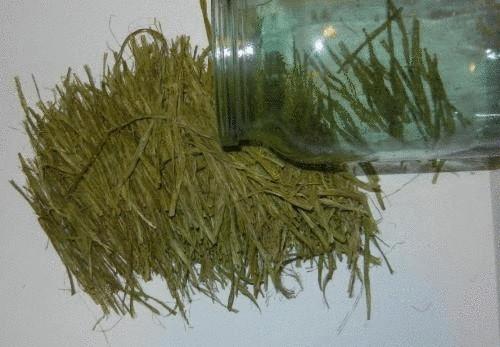
Stage 3: separation of fibers. Most likely, this step will not be necessary, if we could figure out how to remove the needles from the resin. It does not disintegrate fibers after the second stage, and therefore have to separate the thread manually. One needle gives 3-12 strings of appropriate length.
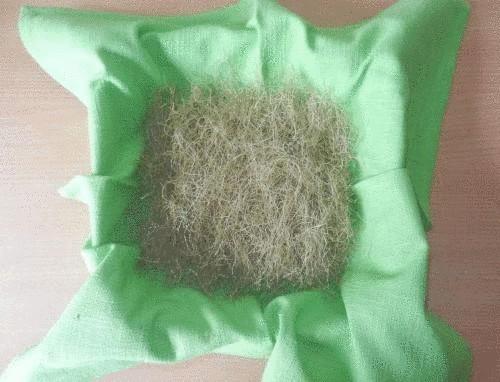
Step 4: twist yarn. Fibers were expanded to the length of the path overlapping, then moistened with a spray bottle and curled in the same direction as the twisting negativas a pencil.
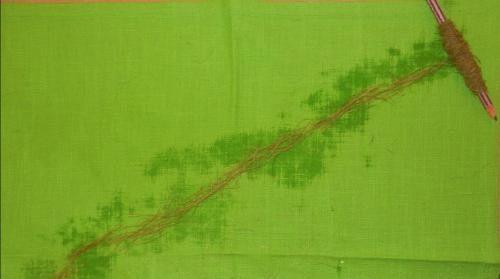
Step 5: strengthen the filament. As in traditional yarn, the obtained filament was divided into two parts, which was coiled twice in the reverse stage 4 direction.
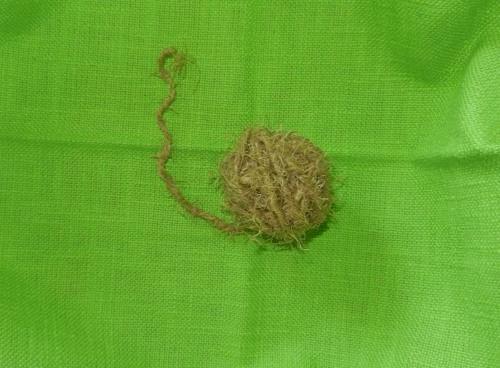
The thread is ready, you can try to associate a piece.
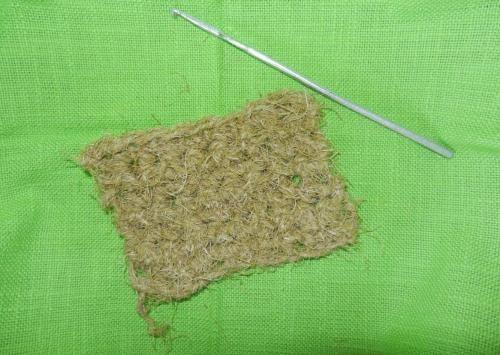
The whole process of the most time-consuming stage 3. How jokes Nikolay Kurdyumov:
"Work is what you have to do you, because you did not arrange to have this done the very"
To separate a sufficient amount of fiber for such a small piece, took about a month of evenings. You can almost certainly find a much easier way. But, as long as...
What happened?
The peculiarity of this product is that it is harder in a dry condition and is very soft, almost silk in the wet. If a dry product for some time remains, for example, on the back, its tingling action increases blood circulation. The skin is very noticeably heats up quickly, there is a perspiration and moisture zone. It becomes soft and ceases to shoot up to the next drying. Thus, no excessive irritation occurs, the process is self-regulating, as if the relay is activated.
As you can see, healing feature confirmed – it is possible to apply instead of dispersing, the blood of the ointment (if not allergic, of course).
And in addition to wool...
There are few indications that pine and cedar needles did felt, which protected the legs in the most severe frosts. To do this, needles are boiled, beaten, and knocked on the block with a mallet to the desired state.
In addition, pine needles are used as stuffing for pillows. These pillows are not just nice to smell the pine volatile purify the air and is very good for respiratory diseases (Allergy sufferers need to find out first if they have allergies to pine needles).
Try to make a cushion under his head. Whole fresh needles were cooked with soda ash (after all, pillow fibre length does not matter), dried, broken with a hammer in chollanam bag (not scattered) and again cooked in the same way. After drying, it turned out the material for stuffing.
One roller takes about 3/4 of a bucket of needles.

Sew a special bag made of thick fabric, like pillow-pillows – and fill with stuffing. The case for the pillow case and voila!

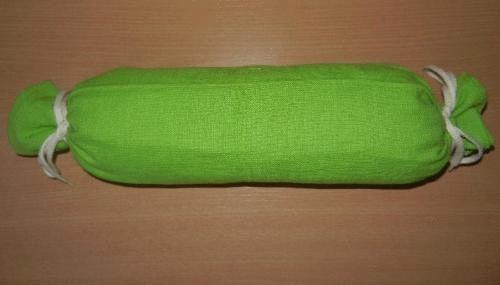
So what can be made of one cubic meter of wood? published
P. S. And remember, only by changing their consumption — together we change the world! ©
Source: www.hint4.me/5706-otkuda-u-sosny-sherst.html
Compatibility of trees on the site
Ecovillage in Denmark - a successful experience in a small eco-friendly state

